Potrebujeme váš súhlas na využitie jednotlivých dát, aby sa vám okrem iného mohli ukazovať informácie týkajúce sa vašich záujmov. Súhlas udelíte kliknutím na tlačidlo „OK“.
ASTM E1366-11
Standard Practice for Standardized Aquatic Microcosms: Fresh Water
Automaticky preložený názov:
Štandardná prax štandardizovaných vodných mikrokozmu: Sladká voda
NORMA vydaná dňa 1.10.2011
Informácie o norme:
Označenie normy: ASTM E1366-11
Poznámka: NEPLATNÁ
Dátum vydania normy: 1.10.2011
Kód tovaru: NS-41511
Počet strán: 30
Približná hmotnosť: 90 g (0.20 libier)
Krajina: Americká technická norma
Kategória: Technické normy ASTM
Kategórie - podobné normy:
Anotácia textu normy ASTM E1366-11 :
Keywords:
Algae, Aqueous environments, Colorimetric analysis, Ecological considerations, Environmental sampling/testing, Fresh water, Microcosm test, Microscopic examination--water, Toxicity/toxicology--water environments, ICS Number Code 13.060.30 (Sewage water)
Doplňujúce informácie
| Significance and Use | ||||||||||||||||||||||||||||||||||||||||||||||||||||||||||||||||||||||||||||||||||||||||||||||||
|
A microcosm test is conducted to obtain information concerning toxicity or other effects of a test material on the interactions among three trophic levels (primary, secondary, and detrital) and the competitive interactions within each trophic level. As with most natural aquatic ecosystems, the microcosms depend upon algal production (primary production) to support the grazer trophic level (secondary production), which along with the microbial community are primarily responsible for the nutrient recycling necessary to sustain primary production. Microcosm initial condition includes some detritus (chitin and cellulose) and additional detritus is produced by the system. The microcosms include ecologically important processes and organisms representative of ponds and lakes, but are non-site specific. The species used are easy to culture in the laboratory and some are routinely used for single species toxicity tests (Guide E729; Practice D3978, Guides E1192 and E1193). Presumably acute toxicity test results with some of these species would be available prior to the decision to undertake the microcosm test. If available, single species toxicity results would aid in distinguishing between indirect and direct effects. These procedures are based mostly on previously published methods (4-6), interlaboratory testing (7-10), intermediate studies (11-22), statistical studies (23-25) and mathematical simulation results (26). Newer studies on jet fuels have been reported (27)(See 15.1 for multivariate statistical analyses) and on the implications of multispecies testing for pesticide registration (28). Environmental Protection Agency, (EPA) and Food and Drug Administration, (FDA) published similar microcosm tests (29). The methods described here were used to determine the criteria for Acceptable Tests (Section 16). Concurrent to measuring the ecological effects, it is advisable to measure the concentration of the parent test chemical, and if possible, the transformation products ((30) see Section 12). The concentrations can be measured on either the same microcosms or on concurrent replicates. Information on the chemical concentrations of parent material and transformation products would aid in the assessment of chemical persistence, exposure, accumulation, and in interpreting, if recovery is associated with chemical degradation or biological adaptation. This protocol deals only with ecological effects, because the techniques for fate studies are in general usage. In the microcosm, as in natural ecosystems, a population must be able to obtain its requirements from the products of other trophic levels, to maintain a birth rate equal to or greater than its death rate, and to support populations of organisms that will remove its waste products. As in natural ecosystems, several organisms might be capable of fulfilling the same function, and shifts in species dominance can occur without disruption of an ecological process. However, species that are “ecological equivalents” in one function might not be “equivalent” in other functions; for example, a filamentous alga and a single cell alga might equally produce O2, remove NO3, NH3, and PO4, but differ in the type of grazer populations they can sustain, for example, filamentous alga might support amphipods whereas unicellular algae might support Daphnia. Results of these microcosm tests might be more likely to be indicative of natural ecosystem responses to chemicals than single species toxicity tests because microcosm tests can indicate the explosive population increases that might occur in a community when more sensitive competitors or predators are eliminated or the food supply is increased through competitive interactions. Also, microcosm tests are more likely to display the effects of chemical transformation or increased exposure to certain organisms by means of concentration of parent or degradation products in their food source or habitat. A list of potential ecological effects is provided to serve as a summary (see Annex A1). The microcosm test can also be used to obtain information on the toxicity or other effects of species or strains, not included in the control inocula (12). Additional modifications might be required. Explicit Limitations of the Aquatic Microcosm Protocol: The scope of the test is limited in the following respects: No fish or other vertebrates are included, Predation on Daphnia is extremely limited or absent, The ecosystem becomes nutrient limited, The inocula are not gnotobiotic and aseptic technique is not used (except in maintaining stock cultures of microorganisms). Contaminating microorganisms are likely to be introduced with the larger organisms and during sampling, and Most detrital processing is carried out by the sediment microbial community, but this community is not clearly described or measured by this protocol. Extrapolation to natural ecosystems should consider differences in community structure, limiting factors, and water chemistry (see Section 17). |
||||||||||||||||||||||||||||||||||||||||||||||||||||||||||||||||||||||||||||||||||||||||||||||||
| 1. Scope | ||||||||||||||||||||||||||||||||||||||||||||||||||||||||||||||||||||||||||||||||||||||||||||||||
|
1.1 This practice covers procedures for obtaining data concerning toxicity and other effects of a test material to a multi-trophic level freshwater community. 1.2 These procedures also might be useful for studying the fate of test materials and transformation products, although modifications and additional analytical procedures might be necessary. 1.3 Modification of these procedures might be justified by special needs or circumstances. Although using appropriate procedures is more important than following prescribed procedures, results of tests conducted using unusual procedures are not likely to be comparable to results of many other tests. Comparison of results obtained using modified and unmodified versions of these procedures might provide useful information concerning new concepts and procedures for conducting multi-trophic level tests. 1.4 This practice is arranged as follows:
1.5 The values stated in SI units are to be regarded as the standard. The values given in parentheses are for information only. 1.6 This standard does not purport to address all of the safety concerns, if any, associated with its use. It is the responsibility of the user of this standard to establish appropriate safety and health practices and determine the applicability of regulatory limitations prior to use. Specific hazard statements are given in Section 7. |
||||||||||||||||||||||||||||||||||||||||||||||||||||||||||||||||||||||||||||||||||||||||||||||||
| 2. Referenced Documents | ||||||||||||||||||||||||||||||||||||||||||||||||||||||||||||||||||||||||||||||||||||||||||||||||
|
Podobné normy:
Historická
1.7.2013
Historická
15.9.2011
Historická
15.6.2012
Historická
1.9.2012
Historická
1.9.2011
Historická
1.4.2013



 ASTM C1478M-08a(2013..
ASTM C1478M-08a(2013..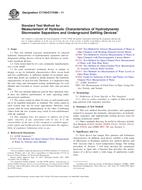 ASTM C1745/C1745M-11..
ASTM C1745/C1745M-11..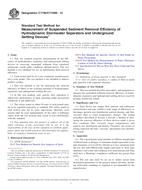 ASTM C1746/C1746M-12..
ASTM C1746/C1746M-12..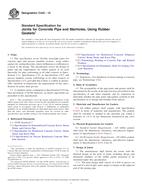 ASTM C443-12
ASTM C443-12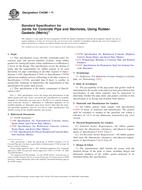 ASTM C443M-11
ASTM C443M-11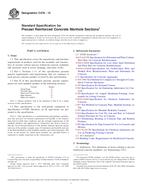 ASTM C478-13
ASTM C478-13
 Cookies
Cookies
